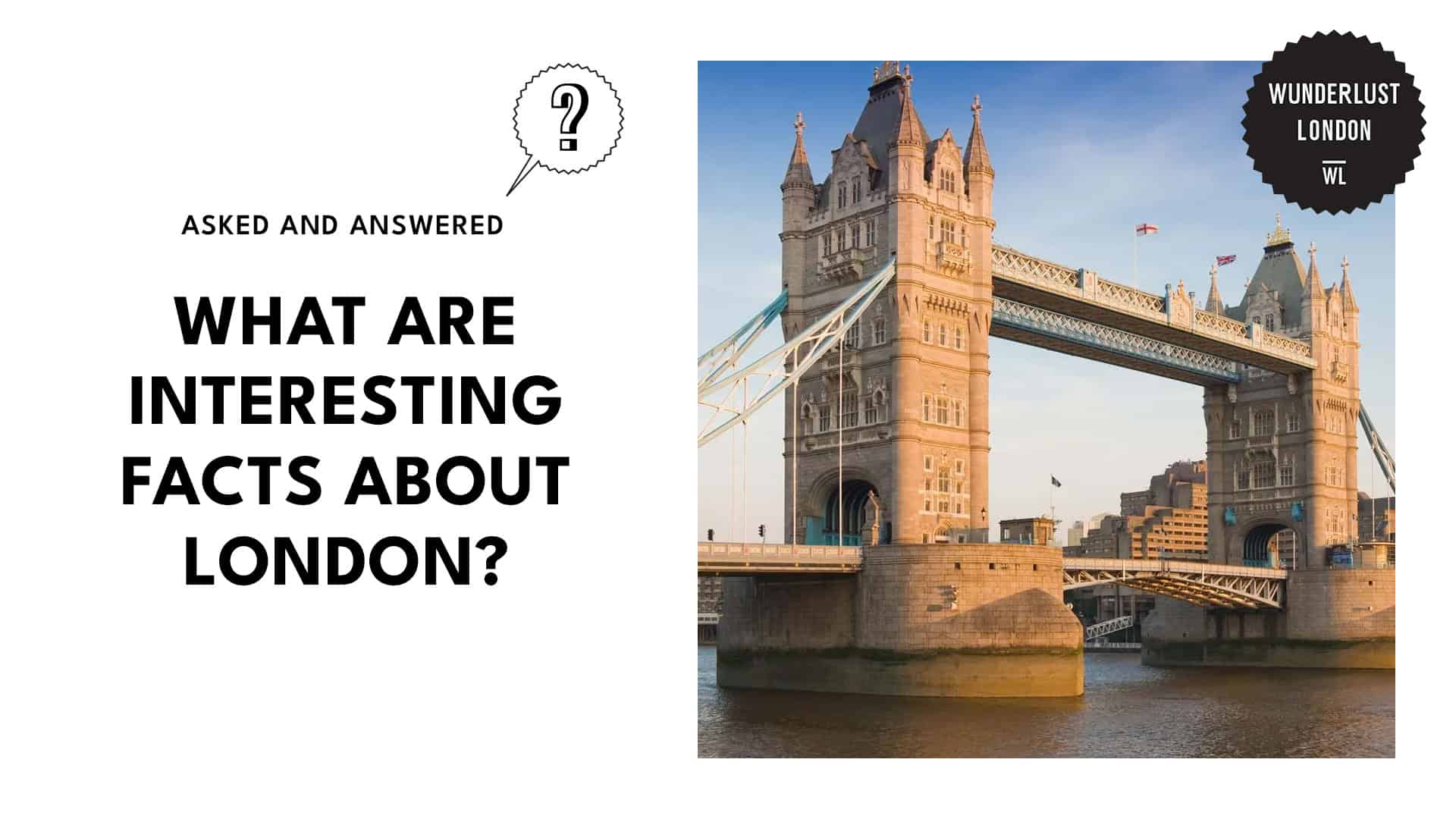London has over 200 Thames River bridges
– Media from guides_club
It probably makes sense that we have so many. Think about it: London is a melting pot of cultures, cuisines, and customs. And these bridges? They’re like the grand ambassadors of unity, connecting neighbourhoods and people from all walks of life.
Skip from the South Bank via the iconic Tower Bridge – then to the North Bank greeted by the sleek Millennium Bridge – you’ll see what we mean. You’re doing more than crossing a river: you’re traversing the diverse heartbeats of London’s social fabric.
The world’s first postcode system was introduced in London in 1857
– Media from 4downdistro
Before the postcode system, delivering mail was akin to a treasure hunt without a map. The sprawling labyrinth of London’s streets made it a challenge for postmen to accurately and swiftly deliver letters and parcels.
Enter Sir Rowland Hill, a forward-thinking chap who proposed a revolutionary solution: dividing the city into bite-sized chunks with easy-to-remember codes. Voila! The postcode system was born.
The Mail Rail was a secret underground postal railway, now a museum
– Media from londonxldn
So, what exactly is the Mail Rail, you ask? Well, imagine a miniaturised train system, complete with tiny tunnels, even tinier carriages, and a mission to transport mail with unmatched speed and efficiency.
It’s like a Harry Potter-esque journey for letters and parcels, minus the magic wands (though we can’t confirm or deny the presence of owls).
But here’s the kicker: the Mail Rail wasn’t just your ordinary postal system. It was a secret underground network, known only to those who were part of its covert operation. Fast-forward to today and the Mail Rail has undergone a magical transformation and become a museum.
Buckingham Palace has over 700 rooms
– Media from m_abdul_hai_2
With over 700 rooms nestled within its sprawling expanse, this royal residence puts the “grand” in grandeur like no other.
This palace plays host to a dazzling array of functions, from state banquets that could rival a Michelin-starred feast to elegant receptions that would make even the most extroverted socialite green with envy.
The design of Leadenhall Market was the inspiration for Diagon Alley in the Harry Potter films
– Media from beccabakes2
Yes, you read that right – the cobblestone lanes, the medieval-inspired architecture, and the bustling energy of Leadenhall Market caught the keen eye of the magical minds behind the Harry Potter films.
But wait, there’s more magic in this tale! Dating back to the 14th century, this historic market has witnessed centuries of change, evolution, and adaptation.
The Wobbly Bridge had to be temporarily closed due to unexpected swaying when it first opened
– Media from gpoz92
Now, before you start worrying about a mass outbreak of seasickness on dry land, let me assure you – it wasn’t a design flaw, but rather an unforeseen quirk that took everyone by surprise.
While some brave souls found it exhilarating, others felt a tad disoriented, prompting the bridge to affectionately earn its “Wobbly Bridge” moniker.
Wilton’s Music Hall has a resident ghost named “The Mahogany Man”
– Media from wiltonsmusichall
Legend has it that the Mahogany Man was a well-dressed gentleman who met an untimely end within the hallowed halls of Wilton’s. Some say he was a patron of the arts, others suggest he might have been a performer himself, forever bound to the place he held dear.
And why the moniker “Mahogany Man”, you wonder? Well, it’s said that his apparition often appears with a rich mahogany hue, adding an extra layer of mystery to his spectral aura.
The “London Stone” was believed to be a source of magical protection for the city
– Media from jonnienicholls90
This ancient artefact has a history that stretches back through the annals of time. It’s mentioned in medieval documents, tied to mystical rituals, and even featured in Geoffrey of Monmouth’s epic tales of King Arthur.
Legend has it that the London Stone was more than just a lump of limestone – it was a talisman, a source of mystical energy that warded off disaster and ensured the safety of the city and its inhabitants.
There are pink pigeons in London
– Media from unilad
Pigeons carry a certain pigment called “pheomelanin”, which, when combined with other factors, can result in a pinkish hue. It’s like Mother Nature decided to add a pop of colour to these urban aviators, just to keep things interesting.
Anyway, you’ll see some of these around our city and parks every now and then, so keep your eyes peeled.
Angel Station has the Tube’s longest escalator
– Media from squarecrumpets
This behemoth of vertical transportation option stretches a jaw-dropping 60 meters from bottom to top. That’s like scaling the height of a 20-story building, all without ever having to lift your feet off those trusty moving steps.
Basically, if that escalator breaks down or stops for any reason, you shouldn’t try to go down or up it using your leg power. You’ll regret it.
London has a 2.4×1.2m police station on Trafalgar Square
– Media from taryn_clausing
The Police Call Box is not your ordinary police station. It’s so compact that it’s been dubbed London’s smallest police station.
This little gem measures just about 2.4 meters by 1.2 meters (roughly 8 feet by 4 feet), making it a more cosy hideaway than sprawling headquarters.
Before, this pint-sized station was a haven for the police officers patrolling Trafalgar Square, offering them a spot to take a break, make phone calls, or simply keep an eye on the bustling crowds.
London’s Tate Modern art gallery was once a power station
– Media from airseapacking
So, here’s the scoop: back in the day, London’s Bankside Power Station was a force to be reckoned with, literally. Pumping out electricity to light up the city, it was the powerhouse that Londoners relied on.
Fast-forward to today and the Tate Modern stands as a testament to the city’s ability to transform the past into an artistic future.
London’s Covent Garden was originally a fruit and vegetable market
– Media from mialmanea
Flash back to the 17th century, and Covent Garden was the epicentre of London’s food scene. Farmers, traders, and shoppers alike would gather here to haggle over the finest produce the city had to offer.
Then the market gradually evolved into a hub of entertainment and culture, attracting performers, artisans, and those seeking a taste of the extraordinary. The result? The Covent Garden we know and love – a mesmerising blend of history, artistry, and urban buzz.
The London Bridge was once purchased by an American entrepreneur
– Media from relagleasondesign
A certain American by the name of Robert P. McCulloch thought, “Hey, wouldn’t it be nifty to own a piece of London’s history?” And so, my friends, he did just that – he bought the London Bridge!
But McCulloch didn’t exactly buy the iconic stone-by-stone marvel you might be picturing. Nope, he purchased the bridge’s granite blocks and transported them to Lake Havasu City in Arizona, USA. Talk about international relocation on a colossal scale!
London endured 57 consecutive nights of bombing during the Blitz
– Media from londonblitzbombs
It all went down between September 7, 1940, and May 11, 1941, when the German Luftwaffe unleashed a relentless storm of bombs upon this iconic city.
While the Blitz brought unimaginable destruction, it also sparked a fiery camaraderie that united Londoners like never before. Shelters turned into communal gathering spots, strangers turned into friends, and ordinary folks became unsung heroes.
The narrowest street in London, Squeezegut Alley, is just 6 feet wide at its narrowest point
– Media from alliesarasmith
At its most svelte point, this pint-sized passage is a mere 6 feet wide – barely enough room for a friendly handshake between two neighbouring buildings.
It’s like people decided to test the limits of architecture, leaving just enough space for a brave soul to venture forth and claim the title of “London’s narrowest lane conqueror”.
London’s Notting Hill Carnival is one of the largest street festivals in the world
– Media from pusspussmag
Since its dazzling debut in 1966, the Notting Hill Carnival has evolved into a monumental masterpiece of multiculturalism. We’re talking millions of people, a whirlwind of parades, and a contagious energy that’s impossible to resist.
The carnival is a vibrant tribute to London’s rich Caribbean community. It’s a mosaic of colours, traditions, and heritage that pays homage to the culture, music, and food of the Caribbean islands.
The London Aquarium is home to a “Vampire Fish”
– Media from fishcolombia
With fang-like teeth that could rival any Hollywood vampire, this aquatic marvel is a true showstopper. And no, it doesn’t feast on hapless underwater victims, but its impressive dental work is a head-turner.
These teeth aren’t just for show, though, they’re a specialised adaptation that helps the “Vampire Fish” survive in its natural habitat, where a quick and efficient bite can mean the difference between a good meal and going hungry.
London’s Kew Gardens house the world’s tiniest water lily, the “pygmy Rwandan water lily”
– Media from clarehalifax
This aquatic gem is a symbol of Kew Garden’s global reach and commitment to preserving the beauty and diversity of plant life from all corners of the world. It’s a gentle reminder that even the tiniest organisms have an essential role to play in the intricate web of life.
And let’s not forget the UNESCO recognition! Yep, Kew Gardens isn’t just any garden – it’s a UNESCO World Heritage Site, a title that places it in the prestigious company of the planet’s most culturally and naturally significant landmarks.
The Thames Barrier has been protecting London from tidal surges since 1982
– Media from garryscottjames
Back in the early ’80s, when shoulder pads were bigger than ever and disco balls were still grooving, London was facing a threat of epic proportions: tidal surges. These surges are caused by a cheeky combination of high tides, strong winds, and meteorological mischief.
But fear not, for in 1982, our trusty hero, the Thames Barrier, emerged from the riverbed to save the day! This engineering marvel consists of a series of gigantic gates that can be raised and lowered as needed.
The annual Boat Race between Oxford and Cambridge Universities is the longest-running rowing race in the world
– Media from theboatraces
The Boat Race is a time capsule of British academic rivalry. It’s where two of the oldest and most prestigious universities in the world come to play, and boy, do they play hard.
With all the academic brilliance that Oxford and Cambridge bring to the table, you’d think they’d be all about theses and textbooks. But nope, they swap their spectacles for sweatbands and throw down in a gruelling 4-mile race that separates the strong from the row-sers.
The “Roman Bath” near Strand Lane is not Roman but a remnant of a 17th-century cistern
– Media from theromanbaths
Back in the day – circa the 1600s – the ingenious folks of London repurposed what used to be a cistern, giving it a Roman-inspired makeover.
You see, cisterns were these nifty water storage tanks, and someone had a lightbulb moment to give one a fancy facelift. And voilà, the “Roman Bath” was born!
And despite the bath’s deceptive exterior, it’s nestled within a secret underground passage. How cool is that? It’s like stepping into a time capsule where history and creativity collide.
The “Clock of the Long Now” at the Science Museum ticks once per year and is designed to run for 10,000 years
– Media from theinterval
This ingenious marvel, conceived by the brilliant minds behind the Long Now Foundation, is no ordinary time-telling contraption. It’s a nod to the grand scale of existence. But what’s the deal with this timepiece that seems to have the patience of a thousand saints?
Well, mate, it’s all about the long game – a whopping 10,000-year game to be precise. You see, the Clock of the Long Now was designed with the audacious goal of operating smoothly for an astonishing ten millennia.
It’s a time-telling titan that dares to challenge the fleeting nature of our existence, encouraging us to think not just in minutes and hours, but in millennia.
The Great Fire of London ravaged 80% of the city in just four days
– Media from guideemily
Back in September 1666, London was like a bustling beehive, with its cobblestone streets and timber-framed houses. But then, disaster struck! It all started innocently enough in a bakery on Pudding Lane.
A simple oven mishap turned into an uncontainable blaze that danced through the narrow streets with a vengeance.
In just four days, a staggering 80% of London was reduced to smouldering ruins. But there’s a silver lining to this. Out of the ashes rose a phoenix of urban planning! The rebuilding of London led to the creation of safer and sturdier structures, paving the way for architectural marvels.







